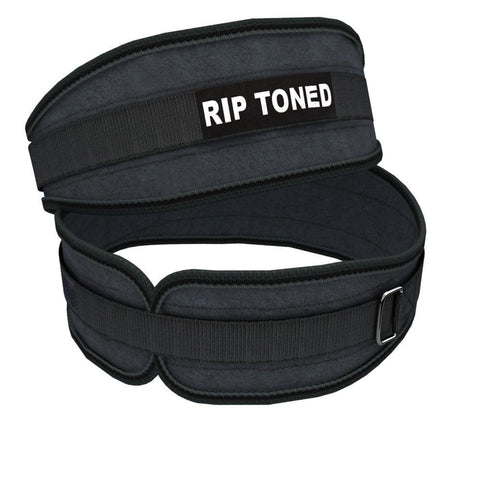Many fitness enthusiasts and those considering weightlifting often worry about the potential impact on their joint health, particularly the risk of developing arthritis.
This concern stems from the belief that the repetitive stress and heavy loads associated with weightlifting might damage cartilage and lead to joint inflammation. However, the relationship between weightlifting and arthritis is complex and multifaceted.
In this blog post, we will delve into the scientific perspectives on the matter, exploring whether weightlifting can indeed cause arthritis or if it might support joint health when done correctly.
Join us as we separate myths from facts and provide clarity on this important issue.
Understanding Arthritis and Its Causes
Before we dive into the potential impact of weightlifting on arthritis, it is crucial to understand what arthritis is and how it develops.
Arthritis refers to a group of conditions characterized by joint pain and inflammation. The most common types are osteoarthritis (OA) and rheumatoid arthritis (RA).
OA is often associated with aging, wear and tear on joints over time or previous injuries. On the other hand, RA is an autoimmune disorder where the body's immune system mistakenly attacks its tissues, including joint linings.
While there are different causes for these types of arthritis, both can lead to cartilage damage and, eventually, joint degeneration.
The Potential Impact of Weightlifting on Arthritis
Weightlifting involves repeatedly lifting heavy weights, which can put a significant amount of stress on joints. This has led to the belief that weightlifting might contribute to or even cause arthritis.
However, the scientific evidence on this is mixed and inconclusive. Some studies have shown an association between high-intensity weightlifting and joint injuries that could potentially lead to arthritis. Still, these findings are often based on self-reported data or small sample sizes, making it challenging to draw definitive conclusions.
Other studies have suggested that weightlifting may support joint health when done correctly. For example, one study found that regular strength training reduced the risk of knee osteoarthritis in older adults. Additionally, engaging in resistance exercises targeting specific joints has been shown to improve joint function and reduce pain in those with arthritis.
Can Weightlifting Cause Arthritis?
While more research is needed to answer this question, current evidence suggests that weightlifting alone may not cause arthritis. Other factors such as genetics, age, previous injuries, and overall joint health play a significant role in the development of arthritis.
Furthermore, proper form and technique are crucial in minimizing the risk of joint injuries during weightlifting. Consulting with a professional trainer or physical therapist can help ensure safe and effective weight training sessions. So, lifting weights in a controlled and appropriate manner may even have a protective effect on joints. Decreased pain and improved joint function may also be possible through weightlifting, as seen in some studies.
Why Do My Joints Hurt When I Lift?
Suppose you experience joint pain while weightlifting. It is essential to identify the source of this discomfort. Here are the four reasons why your joints might hurt during weightlifting:
- Improper Form and Technique - As mentioned earlier, improper form and technique can put excessive stress on joints, leading to pain and potential injuries. It is crucial to learn proper techniques from a professional to avoid these issues.
- Preexisting Conditions - If you have preexisting joint conditions such as arthritis or previous injuries, certain weightlifting exercises may exacerbate the pain. Consult with a healthcare professional to determine which exercises are safe for you.
- Overtraining - Overtraining occurs when you do not allow your body enough time to rest and recover between workouts, leading to excessive stress on joints and potential injuries. Be mindful of incorporating sufficient rest days into your routine.
- Lack of Warm-Up - Warming up before weightlifting helps increase blood flow, loosen muscles, and prepare the body for the upcoming workout. Skipping warm-ups can lead to joint pain during or after exercise.
Because major muscle groups, including those responsible for joint stability, can be strengthened through weightlifting, it is essential to address joint pain immediately. Ignoring the pain and pushing through may worsen existing injuries or lead to new ones.
Myths and Misconceptions
There are several myths and misconceptions surrounding weightlifting and arthritis that need to be debunked. These include:
- Weightlifting always leads to joint injuries - As discussed earlier, there is no definitive evidence to support this claim. Proper form, technique, and gradual progression can significantly reduce the risk of injury.
- Lifting heavy weights is necessary for results - While lifting heavier weights may lead to quicker muscle growth, it also increases stress on joints. Focus on proper form and gradually increase the weight to see progress while minimizing the risk of joint injuries.
- Weightlifting is not suitable for older adults - On the contrary, resistance training has been shown to have numerous health benefits for older adults, including improved joint function and reduced risk of arthritis.
Healthy weightlifting practices, including proper form, technique, and gradual progression, can be beneficial for joint health. Lighter weights and higher repetitions may be more suitable for those with preexisting joint conditions or older adults.
Benefits of Weightlifting for Joint Health
Weightlifting can provide many benefits for joint health when done correctly.
One major benefit is increased muscle strength, which can help support and protect joints from injury. Strong muscles also act as shock absorbers, reducing the impact on joints during physical activity. This can be especially beneficial for individuals with arthritis or previous joint injuries.
Additionally, weightlifting can improve overall joint function and range of motion by strengthening the muscles and connective tissues surrounding the joints. This can lead to reduced pain and stiffness in those with arthritis. For muscle mass and strength, resistance exercises targeting specific joints have been shown to be effective in improving joint function and reducing pain.
Furthermore, weightlifting has been shown to increase bone density, which is crucial for maintaining healthy joints and preventing conditions like osteoporosis. It also helps maintain a healthy body weight, reducing the pressure and stress on joints.
Also, regular resistance training can improve balance and coordination, which can help prevent falls and injuries that may lead to joint problems. Joint injury prevention is crucial in maintaining long-term joint health.
Preventive Measures and Best Practices
To minimize the risk of joint injuries and support overall joint health, it is important to follow certain preventive measures and best practices when weightlifting. These include:
- Consult with a professional - It can be helpful to work with a certified personal trainer or physical therapist who can teach proper form and technique, create an appropriate workout plan, and monitor progress.
- Start slow and gradually increase intensity - Gradually increasing the intensity and weight in weightlifting allows the body time to adapt and build strength without overwhelming joints. Strength training exercises should be done 2-3 times a week with sufficient rest between sessions.
- Incorporate rest days - Giving your body enough time to rest and recover is crucial for preventing overtraining and reducing stress on joints. Aim for at least one or two rest days per week.
- Listen to your body - If you experience joint pain during or after weightlifting, it is important to listen to your body and adjust accordingly. This may mean decreasing the intensity, taking more rest days, or seeking advice from a healthcare professional.
- Proper warm-up and cool-down - Warming up before exercise and cooling down afterward can help prevent joint injuries by increasing blood flow, loosening muscles, and reducing muscle soreness.
By following these preventive measures and best practices, weightlifting can be a safe and effective way to improve joint health and overall fitness. To lift weights without worrying about joint pain or injury, it is crucial to prioritize proper form, technique, and gradual progression.
Avoid These Exercises
While weightlifting can provide numerous benefits for joint health, there are certain exercises that individuals with preexisting joint conditions or injuries should avoid. These include:
- Heavy Squats and Deadlifts - These exercises put a significant amount of stress on the knees and lower back, which may aggravate joint pain in those with preexisting conditions.
- Bench Press and Overhead Shoulder Press - These exercises put excessive strain on the shoulders, potentially exacerbating shoulder injuries or arthritis.
- Explosive Plyometric Exercises - High-intensity exercises like box jumps and burpees involve jumping and landing, which can be tough on joints, especially for those with preexisting conditions.
If you have a joint condition or injury, it is essential to consult with a healthcare professional before beginning any weightlifting routine and avoid these exercises as needed. To manage arthritis symptoms and prevent further joint damage, it is crucial to prioritize safety and proper form over heavy lifting.
FAQs
Is arthritis pain common in bodybuilders?
No, arthritis pain is not common in bodybuilders. While some bodybuilders may experience joint pain due to wear and tear from intense training, this does not necessarily mean they have arthritis. Arthritis is a medical condition that affects the joints' cartilage, causing pain and inflammation.
Can weightlifting cause knee injuries that lead to arthritis?
Weightlifting, when done improperly, can indeed result in knee injuries, which may increase the risk of developing arthritis in the knee joints. However, by maintaining proper form and using appropriate weights, you can minimize this risk.
Does weightlifting exacerbate arthritis joint pain?
Weightlifting does not necessarily exacerbate arthritis joint pain, and it can even help manage symptoms if done correctly. Muscle-strengthening exercises can provide better support for your joints, potentially reducing pain and improving function.
How can I maintain proper form to prevent joint issues while weightlifting?
Proper form is vital to prevent joint issues and avoid exacerbating conditions like arthritis. Start with lighter weights and focus on using the correct form before increasing the intensity. It is also helpful to work with a professional trainer who can guide you through proper techniques and provide feedback.
Conclusion
In conclusion, weightlifting, when performed correctly, does not necessarily cause arthritis and can even enhance joint health. It is crucial to dispel myths and understand that proper form, moderation, and muscle-strengthening exercises are key to preventing knee injuries and managing arthritis joint pain effectively.
By focusing on correct techniques and consulting fitness and healthcare professionals, individuals can safely enjoy the benefits of weightlifting without compromising their joint health. Remember, a well-rounded approach to fitness can support overall well-being and aid in maintaining healthy, pain-free joints.









